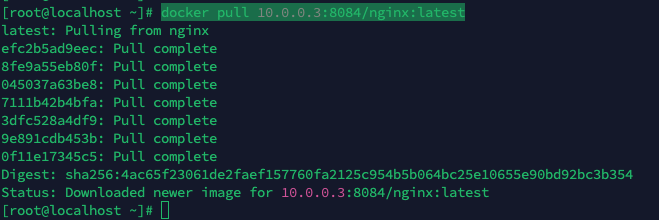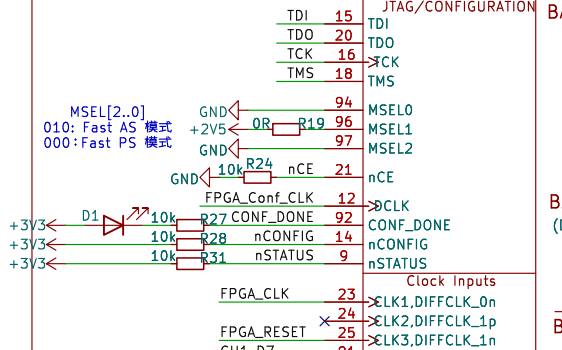项目背景
在云计算和容器技术飞速发展的今天,Kubernetes 已经成为容器编排和管理的事实标准。然而,随着业务的不断扩展,如何在云原生环境下保护和迁移 Kubernetes 集群资源,成为了摆在运维人员面前的一大挑战。Velero,作为一款云原生的灾难恢复和迁移工具,以其强大的功能和灵活的使用方式,为 Kubernetes 集群的数据安全提供了坚实的保障。
环境介绍
本文将基于一个典型的云原生环境,介绍如何使用 Velero 进行 Kubernetes 集群的备份与迁移
- Kubernetes:v1.23.1
- Velero:1.11
开源地址:https://github.com/vmware-tanzu/velero
官方文档:https://velero.io/docs/v1.11/
支持的版本列表

组件介绍
Velero组件
Velero 组件一共分两部分,分别是服务端和客户端。
- 服务端:运行在你 Kubernetes 的集群中
- 客户端:是一些运行在本地的命令行的工具,需要已配置好 kubectl 及集群 kubeconfig 的机器上
velero备份流程
- Velero 客户端
发送 API 请求至 Kubernetes API Server,创建备份任务。 - Kubernetes API Server
接收并处理 Velero 客户端的请求,创建备份任务,同时通过 Watch 机制通知相关的控制器。 - Backup 控制器
通过 Watch 机制监听 API Server,获取备份任务后,向 API Server 请求需要备份的数据。 - 对象存储服务器
Backup 控制器将从 API Server 获取的数据备份至指定的对象存储服务器。


Velero 后端存储
Velero 支持两种用于配置后端存储的自定义资源定义 (CRD),分别是 BackupStorageLocation 和 VolumeSnapshotLocation。
BackupStorageLocation
BackupStorageLocation 主要用于定义 Kubernetes 集群资源的备份存储位置,针对的是集群对象数据,而非持久化卷 (PVC) 的数据。该存储通常是 S3 兼容的对象存储,如 MinIO、阿里云 OSS 等。
VolumeSnapshotLocation
VolumeSnapshotLocation 主要用于对持久化卷 (PV) 进行快照备份,这要求云提供商提供相应的插件。阿里云已经提供了该插件,用户可以通过 CSI (容器存储接口) 等存储机制来进行 PV 的快照备份。此外,用户还可以使用专门的备份工具 Restic,将 PV 的数据备份到阿里云 OSS(安装 Velero 时可以选择自定义该选项)。
Restic 是一款 GO 语言开发的数据加密备份工具,顾名思义,可以将本地数据加密后传输到指定的仓库。支持的仓库有 Local、SFTP、Aws S3、Minio、OpenStack Swift、Backblaze B2、Azure BS、Google Cloud storage、Rest Server。
velero客户端
在 Github Release 页面下载指定的 velero 二进制客户端安装包,比如这里我们下载我们k8s集群对应的版本为 v1.11.1

版本列表:https://github.com/vmware-tanzu/velero/releases
安装velero客户端
$ wget https://github.com/vmware-tanzu/velero/releases/download/v1.11.1/velero-v1.11.1-linux-amd64.tar.gz
$ tar zxf velero-v1.11.1-linux-amd64.tar.gz
$ mv velero-v1.11.1-linux-amd64/velero /usr/bin/
$ velero -h
# 启用命令补全
$ source <(velero completion bash)
$ velero completion bash > /etc/bash_completion.d/velero
安装minio
Velero支持很多种存储插件,可查看:Velero Docs - Providers获取插件信息,我们这里使用minio作为S3兼容的对象存储提供程序。您也可以在任意地方部署Minio对象存储,只需要保证K8S集群可以访问到即可。
minio.yaml
---
apiVersion: v1
kind: Namespace
metadata:
name: velero
---
apiVersion: apps/v1
kind: Deployment
metadata:
namespace: velero
name: minio
labels:
component: minio
spec:
strategy:
type: Recreate
selector:
matchLabels:
component: minio
template:
metadata:
labels:
component: minio
spec:
volumes:
- name: storage
emptyDir: {}
- name: config
emptyDir: {}
containers:
- name: minio
image: minio/minio:latest
imagePullPolicy: IfNotPresent
args:
- server
- /storage
- --config-dir=/config
- --console-address=:9001
env:
- name: MINIO_ACCESS_KEY
value: "minio"
- name: MINIO_SECRET_KEY
value: "minio123"
ports:
- containerPort: 9000
volumeMounts:
- name: storage
mountPath: "/storage"
- name: config
mountPath: "/config"
---
apiVersion: v1
kind: Service
metadata:
namespace: velero
name: minio
labels:
component: minio
spec:
# ClusterIP is recommended for production environments.
# Change to NodePort if needed per documentation,
# but only if you run Minio in a test/trial environment, for example with Minikube.
type: NodePort
ports:
- name: api
port: 9000
targetPort: 9000
nodePort: 32000
- name: console
port: 9001
targetPort: 9001
nodePort: 32001
selector:
component: minio
---
apiVersion: batch/v1
kind: Job
metadata:
namespace: velero
name: minio-setup
labels:
component: minio
spec:
template:
metadata:
name: minio-setup
spec:
restartPolicy: OnFailure
volumes:
- name: config
emptyDir: {}
containers:
- name: mc
image: minio/mc:latest
imagePullPolicy: IfNotPresent
command:
- /bin/sh
- -c
- "mc --config-dir=/config config host add velero http://minio:9000 minio minio123 && mc --config-dir=/config mb -p velero/velero"
volumeMounts:
- name: config
mountPath: "/config"
创建minio应用
# 创建velero命名空间
$ kubectl create namespace velero
# 创建minio资源
$ kubectl apply -f minio.yaml
# 查看部署状态
[root@bt velero]# kubectl get sts,pod,svc -n velero
NAME READY STATUS RESTARTS AGE
pod/minio-78f994f86c-4t9lw 1/1 Running 0 27h
pod/minio-setup-d7vbl 0/1 Completed 4 27h
pod/node-agent-6z5mn 1/1 Running 0 27h
pod/node-agent-8kjcm 1/1 Running 0 27h
pod/node-agent-k8zbk 1/1 Running 0 27h
pod/velero-85dd87c457-mz5jm 1/1 Running 0 27h
NAME TYPE CLUSTER-IP EXTERNAL-IP PORT(S) AGE
service/minio NodePort 172.21.25.69 <none> 9000:32000/TCP,9001:32001/TCP 27h
# 开放NodePort端口
$ kubectl patch svc minio -n velero -p '{"spec": {"type": "NodePort"}}'
$ kubectl patch svc minio -n velero --type='json' -p='[{"op": "replace", "path": "/spec/ports/0/nodePort", "value":9000},{"op": "replace", "path": "/spec/ports/1/nodePort", "value":9001}]'
[root@bt velero]# kubectl get svc -n velero
NAME TYPE CLUSTER-IP EXTERNAL-IP PORT(S) AGE
minio NodePort 172.21.25.69 <none> 9000:32000/TCP,9001:32001/TCP 27h
通过浏览器访问服务器IP:30282,并使用账号minio密码minio123登入验证。

velero 服务端
我们可以使用 velero 客户端来安装服务端,也可以使用 Helm Chart 来进行安装,比如这里我们用客户端来安装,velero 命令默认读取 kubectl 配置的集群上下文,所以前提是 velero 客户端所在的节点有可访问集群的 kubeconfig 配置。
创建密钥
首先准备密钥文件,在当前目录建立一个空白文本文件,内容如下所示:
$ cat > credentials-velero <<EOF
[default]
aws_access_key_id = minio
aws_secret_access_key = minio123
EOF
安装velero到k8s集群
替换为之前步骤中 minio 的对应 access key id 和 secret access key如果 minio 安装在 kubernetes 集群内时按照如下命令安装 velero 服务端:
$ velero install \
--provider aws \
--image velero/velero:v1.11.1 \
--plugins velero/velero-plugin-for-aws:v1.7.1 \
--bucket velero \
--secret-file ./credentials-velero \
--use-node-agent \
--use-volume-snapshots=false \
--namespace velero \
--backup-location-config region=minio,s3ForcePathStyle="true",s3Url=http://minio:9000 \
--wait
# 执行install命令后会创建一系列清单,包括CustomResourceDefinition、Namespace、Deployment等。
# velero install .... --dry-run -o yaml > velero_deploy.yaml 如果为私仓,可以通过--dry-run 导出 YAML 文件调整在应用。
# 可使用如下命令查看运行日志
$ kubectl logs deployment/velero -n velero
# 查看velero创建的api对象
$ kubectl api-versions | grep velero
velero.io/v1
# 查看备份位置
$ velero backup-location get
NAME PROVIDER BUCKET/PREFIX PHASE LAST VALIDATED ACCESS MODE DEFAULT
default aws velero Available 2024-08-16 14:42:38 +0800 CST ReadWrite true
#卸载命令
# velero uninstall --namespace velero
You are about to uninstall Velero.
Are you sure you want to continue (Y/N)? y
Waiting for velero namespace "velero" to be deleted
............................................................................................................................................................................................
Velero namespace "velero" deleted
Velero uninstalled ⛵
选项说明:
--kubeconfig(可选):指定kubeconfig认证文件,默认使用.kube/config;--provider:定义插件提供方;--image:定义运行velero的镜像,默认与velero客户端一致;--plugins:指定使用aws s3兼容的插件镜像;--bucket:指定对象存储Bucket桶名称;--secret-file:指定对象存储认证文件;--use-node-agent:创建Velero Node Agent守护进程,托管FSB模块;--use-volume-snapshots:是否启使用快照;--namespace:指定部署的namespace名称,默认为velero;--backup-location-config:指定对象存储地址信息;
aws插件与velero版本对应关系:

卸载velero
如果您想从集群中完全卸载Velero,则以下命令将删除由velero install创建的所有资源:
kubectl delete namespace/velero clusterrolebinding/velero
kubectl delete crds -l component=velero
备份与恢复
备份命令:velero create backup NAME [flags]
backup选项:
--exclude-namespaces stringArray: 要从备份中排除的名称空间--exclude-resources stringArray: 要从备份中排除的资源,如storageclasses.storage.k8s.io--include-cluster-resources optionalBool[=true]: 包含集群资源类型--include-namespaces stringArray: 要包含在备份中的名称空间(默认’*')--include-resources stringArray: 备份中要包括的资源--labels mapStringString: 给这个备份加上标签-o, --output string: 指定输出格式,支持’table’、‘json’和’yaml’;-l, --selector labelSelector: 对指定标签的资源进行备份--snapshot-volumes optionalBool[=true]: 对 PV 创建快照--storage-location string: 指定备份的位置--ttl duration: 备份数据多久删掉--volume-snapshot-locations strings: 指定快照的位置,也就是哪一个公有云驱动
使用官方案例创建测试应用
$ kubectl apply -f examples/nginx-app/base.yaml
namespace/nginx-example created
deployment.apps/nginx-deployment created
service/my-nginx created
# 查看资源清单
$ kubectl get all -n nginx-example
NAME READY STATUS RESTARTS AGE
pod/nginx-deployment-5c844b66c8-t5l9z 1/1 Running 0 27h
pod/nginx-deployment-5c844b66c8-vlkqj 1/1 Running 0 27h
NAME TYPE CLUSTER-IP EXTERNAL-IP PORT(S) AGE
service/my-nginx LoadBalancer 172.21.18.168 192.168.102.51 80:31831/TCP 27h
NAME READY UP-TO-DATE AVAILABLE AGE
deployment.apps/nginx-deployment 2/2 2 2 27h
NAME DESIRED CURRENT READY AGE
replicaset.apps/nginx-deployment-5c844b66c8 2 2 2 27h
备份测试应用
$ velero backup create nginx-backup --include-namespaces nginx-example
Backup request "nginx-backup" submitted successfully.
Run `velero backup describe nginx-backup` or `velero backup logs nginx-backup` for more details.
选项:
--include-namespaces:指定命名空间--selector:标签选择器,如app=nginx
查看备份列表
$ velero backup get
NAME STATUS ERRORS WARNINGS CREATED EXPIRES STORAGE LOCATION SELECTOR
nginx-backup Completed 0 0 2024-08-15 11:17:18 +0800 CST 28d default <none>
# 查看备份详细信息
$ velero backup describe nginx-backup
# 查看备份日志
$ velero backup logs nginx-backup
登入minio控制台查看备份内容

定时备份指南
# 使用cron表达式备份
$ velero schedule create nginx-daily --schedule="0 1 * * *" --include-namespaces nginx-example
# 使用一些非标准的速记 cron 表达式
$ velero schedule create nginx-daily --schedule="@daily" --include-namespaces nginx-example
# 手动触发定时任务
$ velero backup create --from-schedule nginx-daily
更多cron示例请参考:cron package’s documentation
恢复
模拟灾难
# 删除nginx-example命名空间和资源
$ kubectl delete namespace nginx-example
# 检查是否删除
$ kubectl get all -n nginx-example
No resources found in nginx-example namespace.
恢复资源
$ velero backup get
NAME STATUS ERRORS WARNINGS CREATED EXPIRES STORAGE LOCATION SELECTOR
nginx-backup Completed 0 0 2024-04-06 21:47:16 +0800 CST 29d default <none>
$ velero restore create --from-backup nginx-backup
Restore request "nginx-backup-20240406215611" submitted successfully.
Run `velero restore describe nginx-backup-20240406215611` or `velero restore logs nginx-backup-20240406215611` for more details.
检查恢复的资源
$ velero restore get
NAME BACKUP STATUS STARTED COMPLETED ERRORS WARNINGS CREATED SELECTOR
nginx-backup-20240406215611 nginx-backup Completed 2024-04-06 21:56:11 +0800 CST 2024-04-06 21:56:12 +0800 CST 0 2 2024-04-06 21:56:11 +0800 CST <none>
# 查看详细信息
$ velero restore describe nginx-backup-20240406215611
# 检查资源状态
$ kubectl get all -n nginx-example
NAME READY STATUS RESTARTS AGE
pod/nginx-deployment-5c844b66c8-t5l9z 1/1 Running 0 27h
pod/nginx-deployment-5c844b66c8-vlkqj 1/1 Running 0 27h
NAME TYPE CLUSTER-IP EXTERNAL-IP PORT(S) AGE
service/my-nginx LoadBalancer 172.21.18.168 192.168.102.51 80:31831/TCP 27h
NAME READY UP-TO-DATE AVAILABLE AGE
deployment.apps/nginx-deployment 2/2 2 2 27h
NAME DESIRED CURRENT READY AGE
replicaset.apps/nginx-deployment-5c844b66c8 2 2 2 27h
参考:
https://www.cnblogs.com/nf01/p/18118159
https://github.com/vmware-tanzu/velero
https://velero.io/docs/v1.11/



















